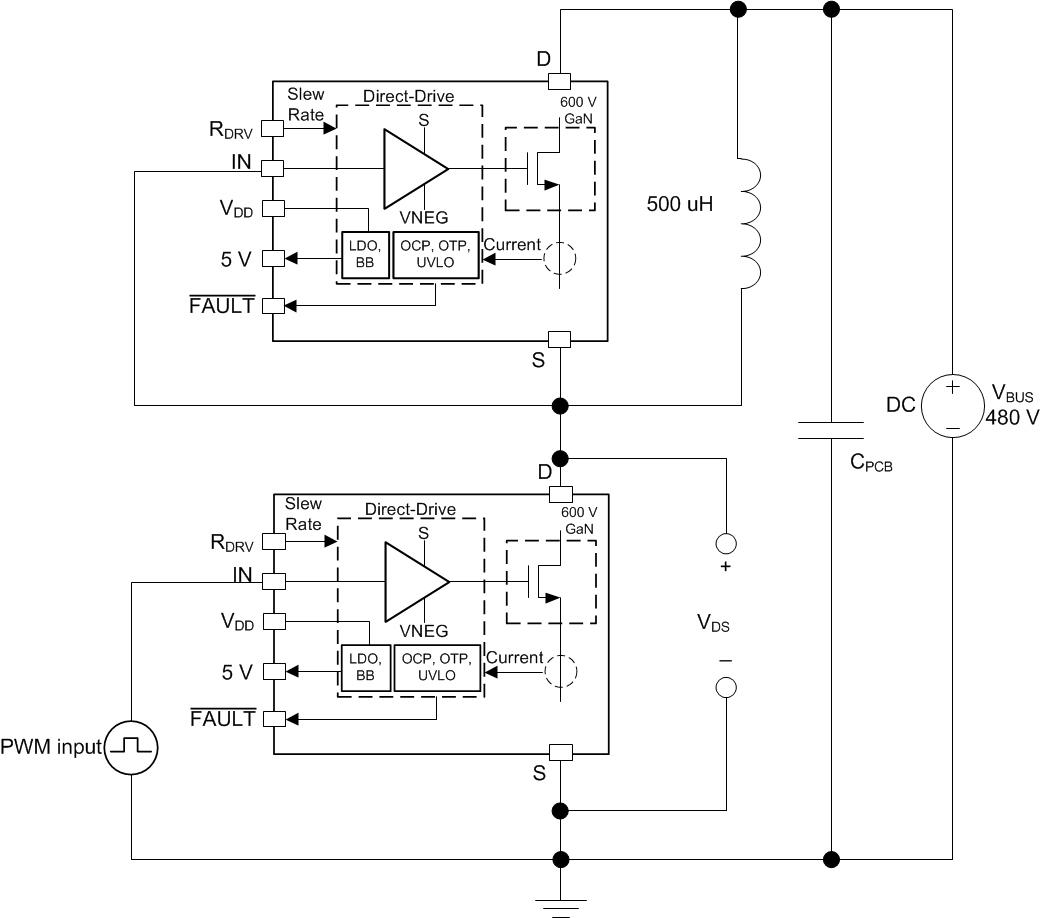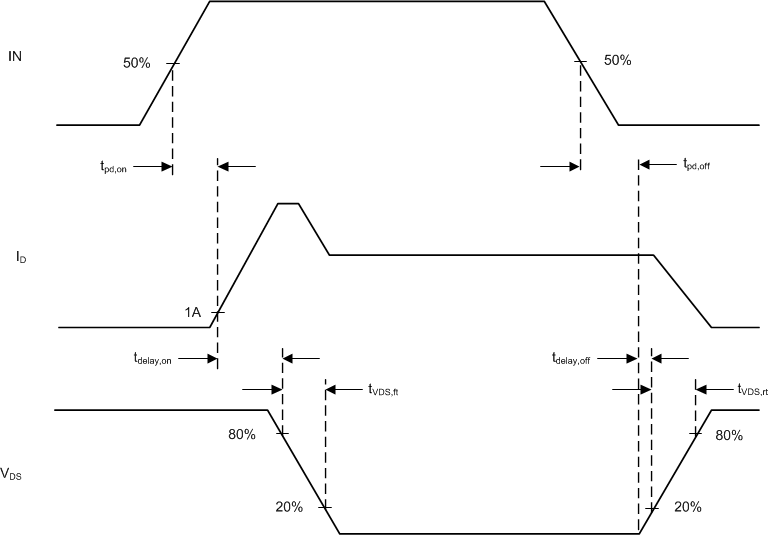JAJSG97A September 2018 – March 2019 LMG3410R050 , LMG3411R050
ADVANCE INFORMATION for pre-production products; subject to change without notice.
- 1 特長
- 2 アプリケーション
- 3 概要
- 4 改訂履歴
- 5 Pin Configuration and Functions
- 6 Specifications
- 7 Parameter Measurement Information
- 8 Detailed Description
- 9 Application and Implementation
- 10Power Supply Recommendations
- 11Layout
- 12デバイスおよびドキュメントのサポート
- 13メカニカル、パッケージ、および注文情報
7.1 Switching Parameters
The circuit used to measure most switching parameters is shown in Figure 1. The top LMG341xR050 in this circuit is used to re-circulate the inductor current and functions in third-quadrant mode only. The bottom device is the active device; it is turned on to increase the inductor current to the desired test current. The bottom device is then turned off and on to create switching waveforms at a specific inductor current. Both the drain current (at the source) and the drain-source voltage is measured. The specific timing measurement is shown in Figure 2. It is recommended to use the half-bridge as double pulse tester. Excessive 3rd quadrant operation may over heat the top LMG341xR050.
 Figure 1. Circuit Used to Determine Switching Parameters
Figure 1. Circuit Used to Determine Switching Parameters  Figure 2. Measurement to Determine Propagation Delays and Slew Rates
Figure 2. Measurement to Determine Propagation Delays and Slew Rates